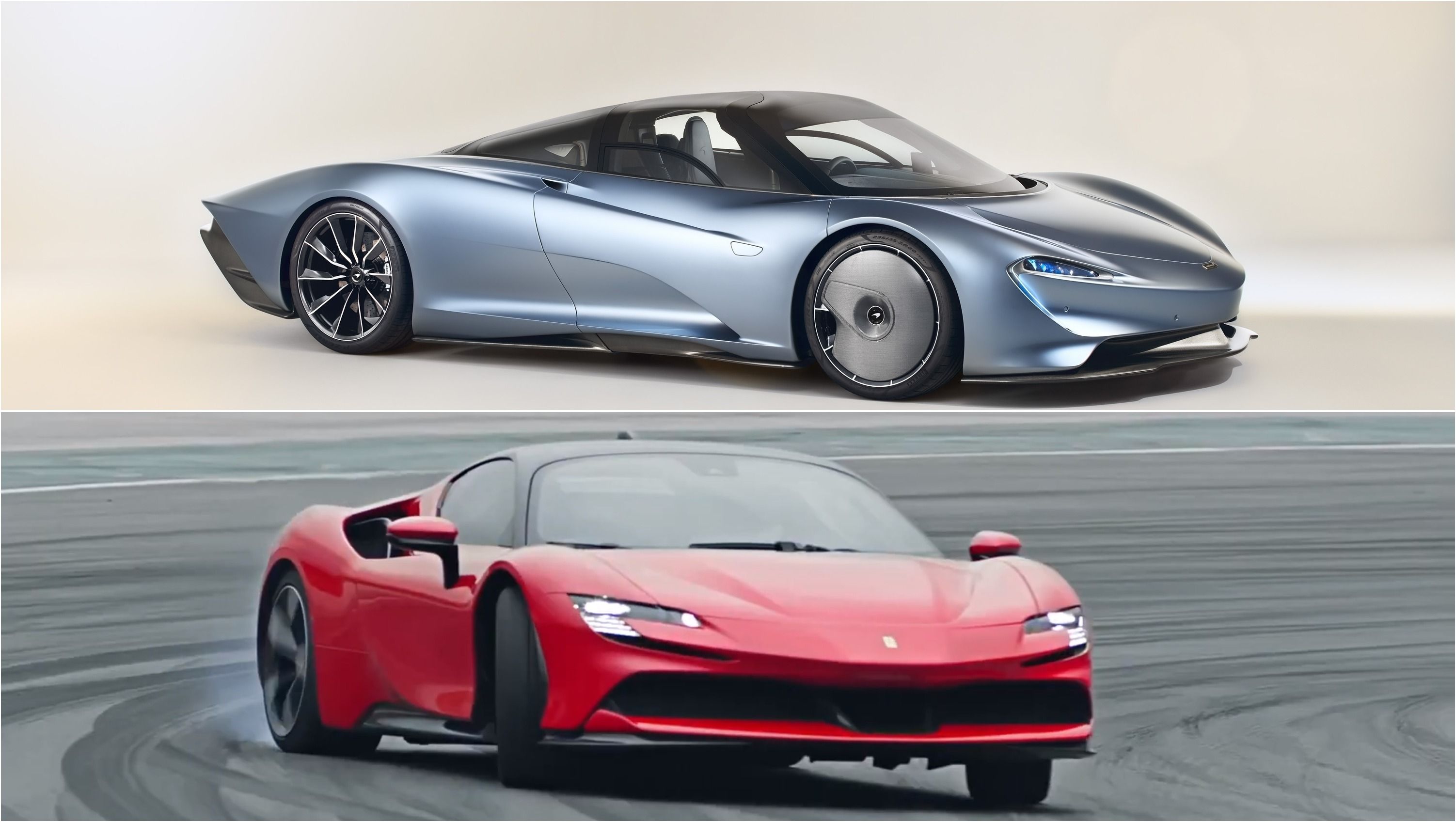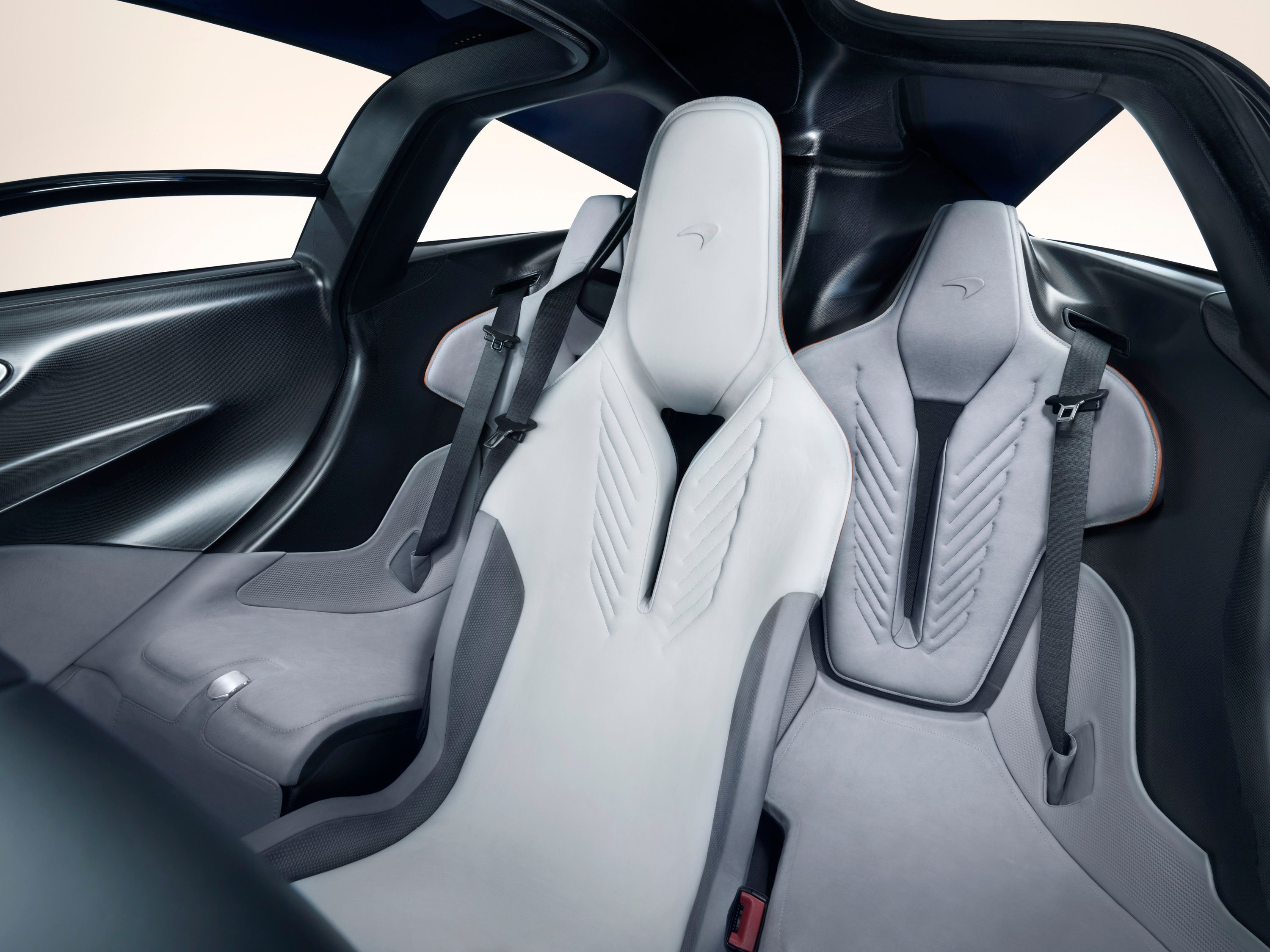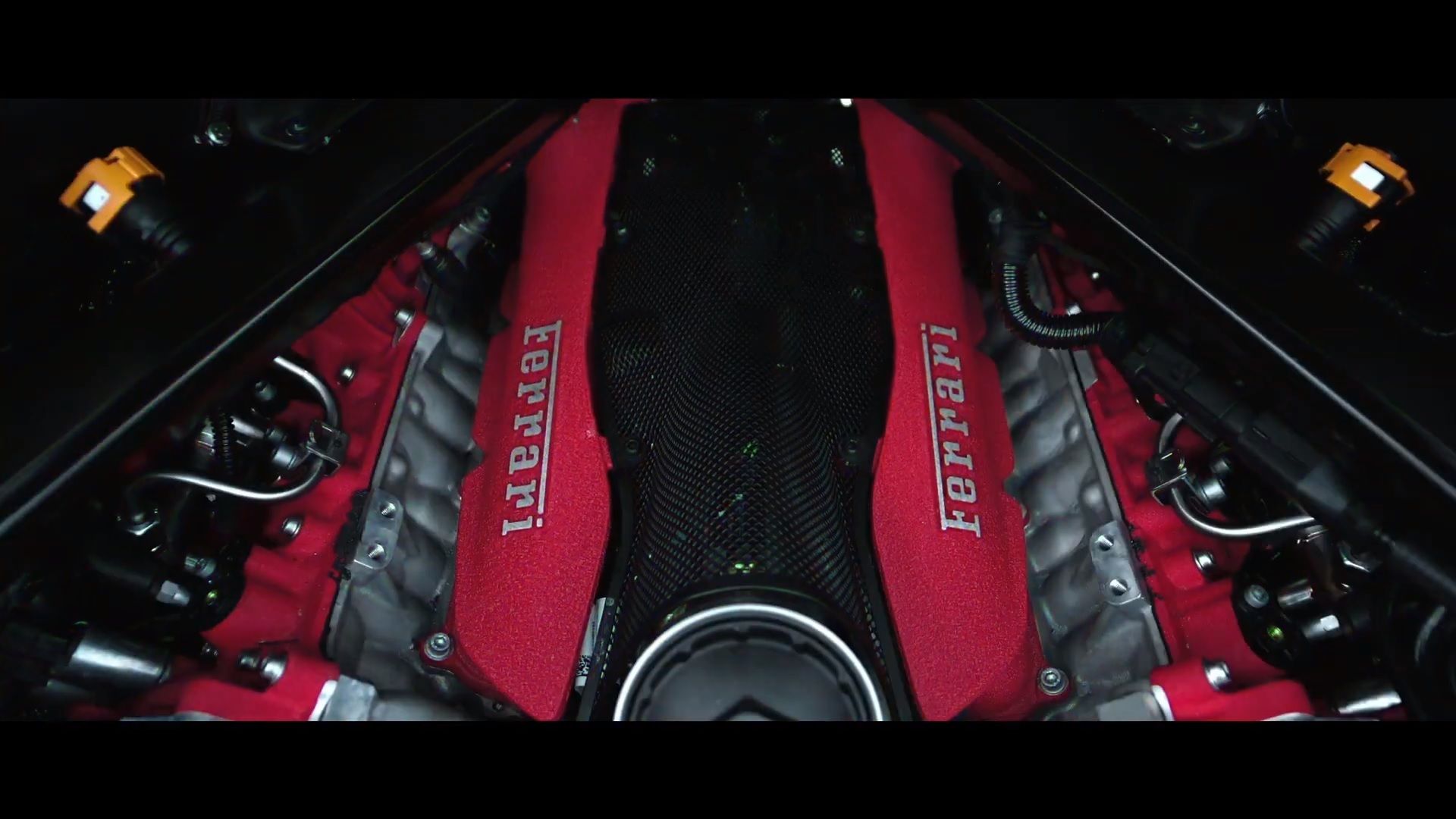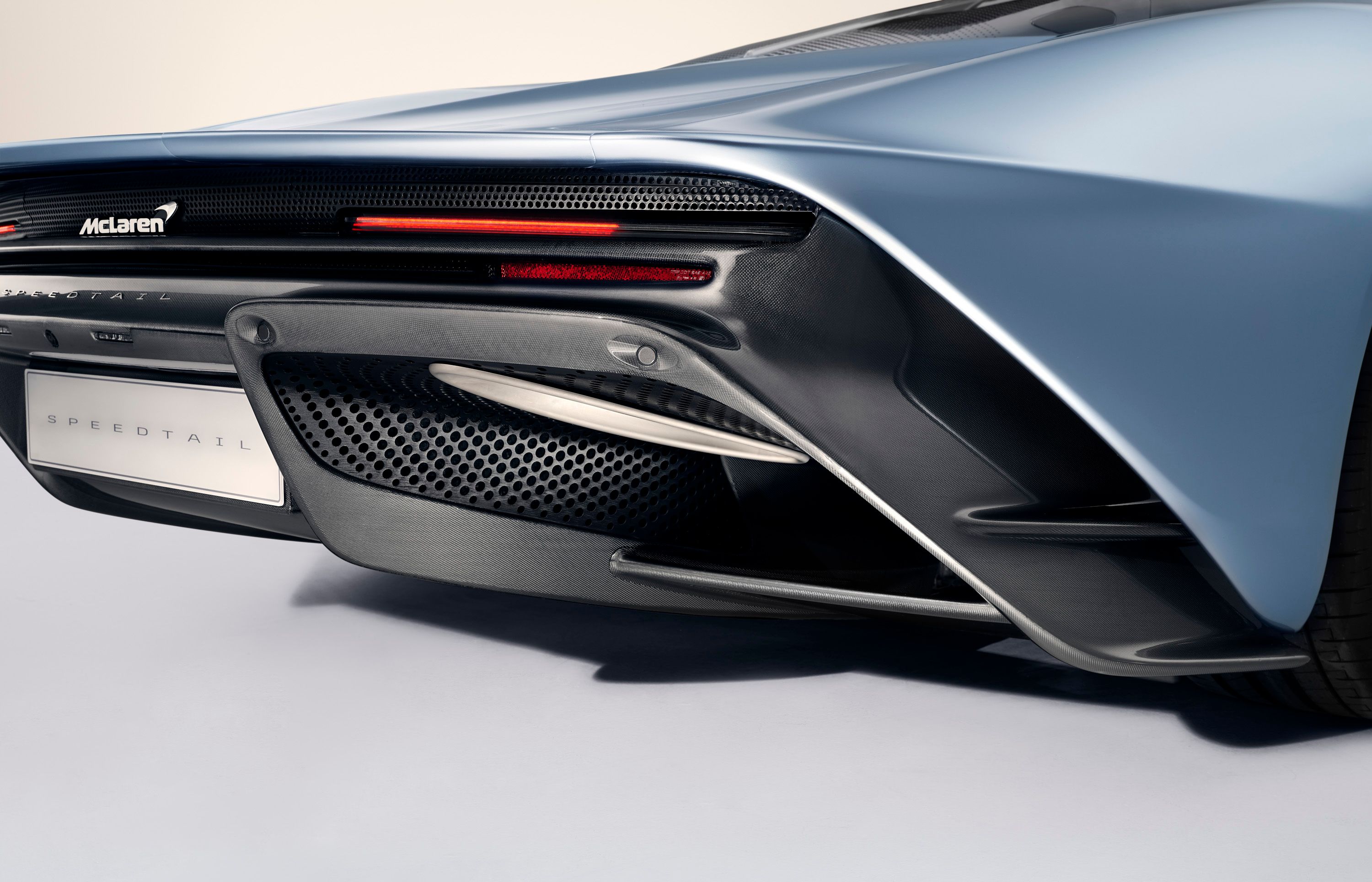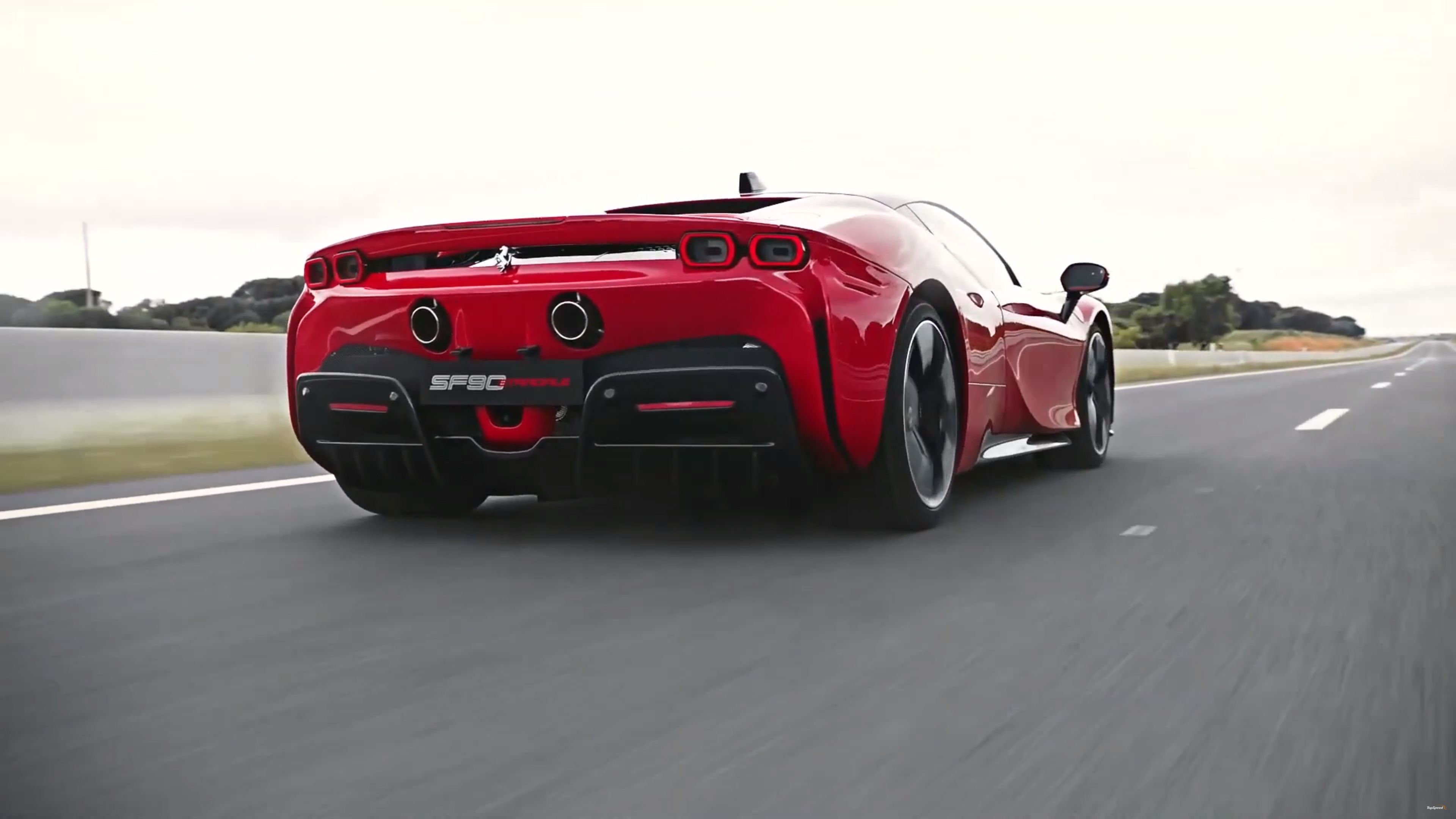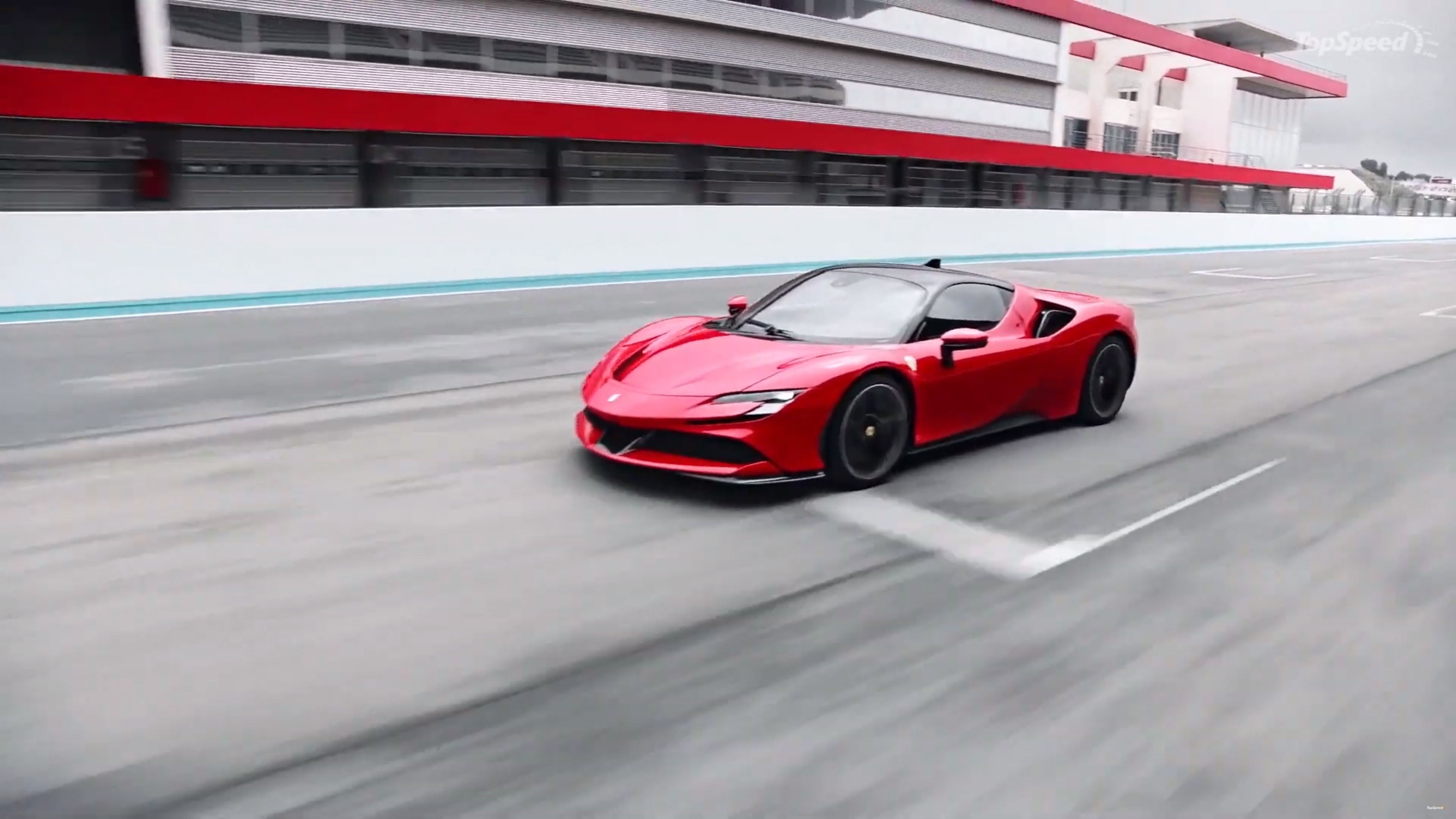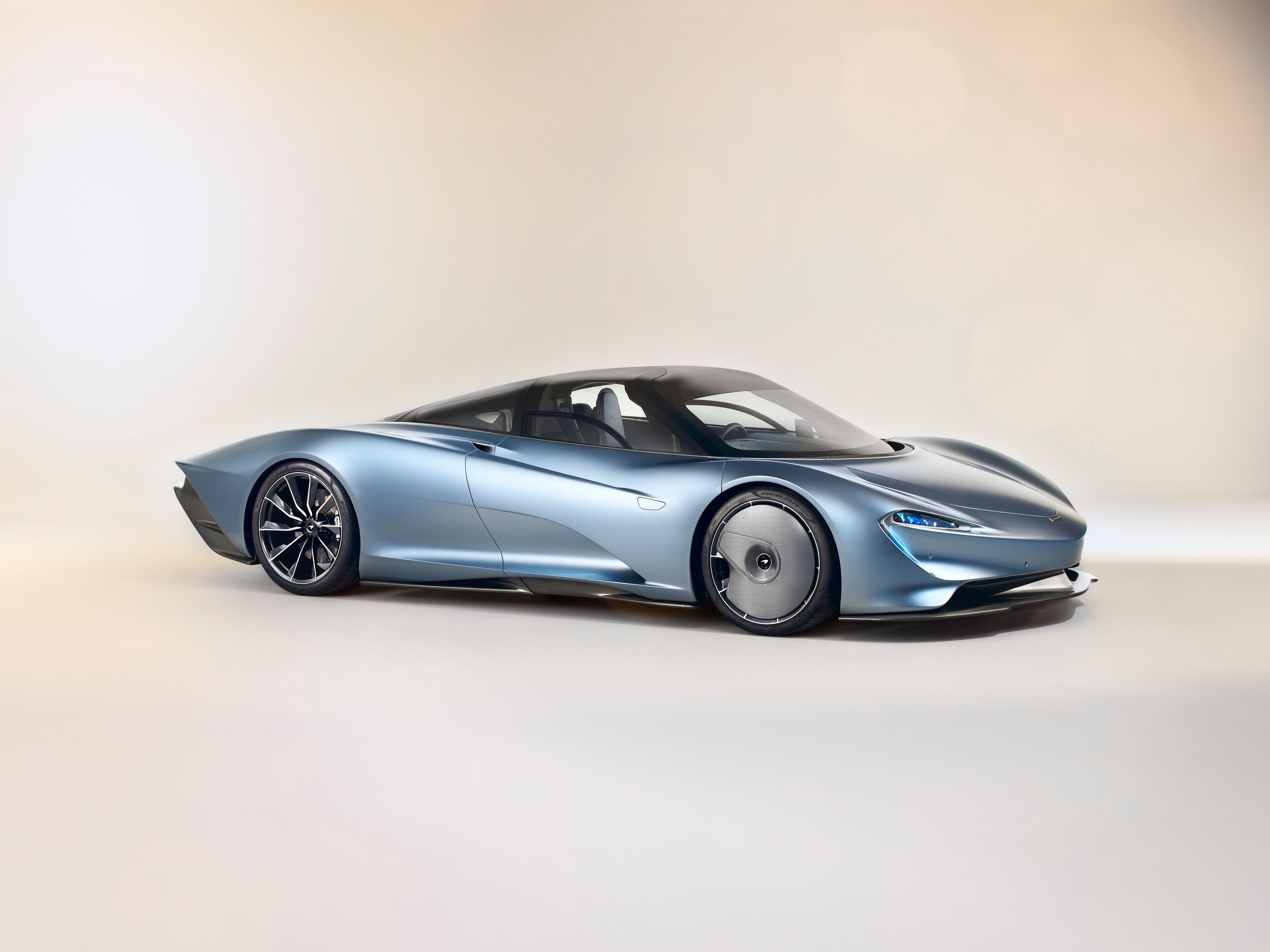Back in 2013, we had an interesting hybrid supercar war going on between Ferrari and McLaren. Both companies launched their first hybrids at the Geneva Motor Show, and both supercars were incredibly powerful and fast. Enthusiasts and journalists were comparing them all over the place, and head-on drag race videos were getting billions of views. Everyone wanted to know which supercar was quicker. Six years later and McLaren has a new hybrid to brag about. It's called the Speedtail, and it's notably different than the P1. Likewise, Ferrari launched the SF90 Stradale, its second hybrid after the LaFerrari. As you might have already guessed, we're going to compare the two in all major departments.
Design
|
|
ids=842398,842399 |
no_overlay=false |
before_label=Ferrari SF90 Stradale |
after_label=Ferrari LaFerrari> |
The Ferrari SF90 Stradale may be a hybrid, just like the LaFerrari, but it's not a direct successor to the already iconic hypercar. While the LaFerrari was a range-topping vehicle, the SF90 Stradale sits lower in the lineup, with a LaFerrari successor to be launched in 2021. So the SF90 Stradale doesn't really stand out as a unique supercar in the lineup, as it borrows design features from other Ferraris. By contrast, the Speedtail is a bespoke vehicle that's not included in any of McLaren's existing supercar series.
Although it's indeed notably more aggressive than the F8 Tributo and the 812 Superfast, the SF90 Stradale doesn't look as radical as the LaFerrari. It no longer features an F1-style nose, the front fascia is cleaner, while the rear fender vents are clearly based on the F8 Tributo's. The rear fascia marks a return to Ferrari's traditional quad-taillight design, but other than that and the center-mounted exhaust, the SF90 looks a lot like existing Ferrari models. The roof and the engine hood are unique though and signal that Ferrari actually put a lot of effort in this design.
|
|
ids=845092,845091 |
no_overlay=false |
before_label=2020 Ferrari SF90 Stradale |
after_label=2019 McLaren Speedtail> |
The McLaren Speedtail, on the other hand, stands out as a unique offering in the lineup. The clean design of the nose set it apart from supercars like the 720S and the Senna, while the long rear end is completely unique. McLaren focused almost solely on aerodynamics here and designed a teardrop-shaped rear end that lacks a traditional spoiler or wing. The transparent roof is unusually tall above the seats and extends toward the mid-mounted engine in the shape of a jet fighter canopy. The Speedtail doesn't even have a rear fascia, with the entire rear end being a huge diffuser with really thin taillights at the top.
Other innovative features that set the Speedtail apart from the SF90 Stradale include camera mirrors that retract into the body, aerodynamic covers for the front wheels, and a longer-than-usual decklid. Speaking of length, the Speedtail is the longest McLaren to date, measuring a whopping 202.2 inches. That's 16.8 inches longer than the Ferrari SF90 Stradale.
|
|
ids=845094,845093 |
no_overlay=false |
before_label=2020 Ferrari SF90 Stradale |
after_label=2019 McLaren Speedtail> |
Interior
The SF90 Stradale and the Speedtail are entirely different when it comes to cabin layout. While the Ferrari is a traditional supercar with two seats, the Speedtail is a tribute to the F1 and features three seats. Not only that, but the McLaren has a central driver's seat, just like the F1, which is a real feat in the auto industry.
I could go on and on about how these supercars are packed with technology and expensive materials, but it would be pointless since all expensive cars have these features. Things are as simple as they go here. The SF90 Stradale retains the two-seat layout we know and love for more than a century, while the Speedtail aims for that Formula One feeling with a driver's seat placed in the middle.
|
|
ids=845095,845096 |
no_overlay=false |
before_label=2020 Ferrari SF90 Stradale |
after_label=2019 McLaren Speedtail> |
It's difficult to say which supercar is the most comfortable. Like most hypercars out there, both seem cramped and don't offer too much comfort for long trips. At the end of the day, both are more suitable for track use rather than long cruises on the highway or vacations. However, the Speedtail wins when it comes to passenger capacity. While the SF90 Stradale will enable you to carry just one passenger, the Speedtail has two passenger seats on each side of the driver's seat, so you can take two friends for a stroll.
Trunk space, you ask? Well, as I said, these cars weren't built with family vacations in mind, so you can only carry very small items and bags.
As far as styling goes, I'd say that the Speedtail wins. The SF90 Stradale looks too much like a regular Ferrari, and that overall black layout isn't doing the cabin justice. The Speedtail boasts that high-tech look that enthusiasts are looking for in a supercar nowadays thanks to the three massive screens on the dashboard and the aluminum and carbon-fiber elements that cover almost all surfaces.
|
|
ids=845097,845098 |
no_overlay=false |
before_label=2020 Ferrari SF90 Stradale |
after_label=2019 McLaren Speedtail> |
Drivetrain
Both supercars have hybrid drivetrains, but both feature notably different layouts. Unlike its predecessor, the SF90 Stradale ditched the V-12 in favor of a V-8 unit. The 4.0-liter engine is based on that in the F8 Tributo, but it's more powerful at 769 horsepower and 590 pound-feet of torque. Ferrari also ditched the KERS system in the LaFerrari for a lithium-ion battery pack and three electric motors. Two of these motors spin the front axle, while the third is located in the rear. Yes, the SF90 Stradale is the first all-wheel-drive Ferrari with a V-8 engine.
The electric motors add an extra 217 horsepower, increasing the drivetrain's total output to 986 horses. Torque figures for the motors aren't yet available, but they should deliver more than 300 pound-feet and increase the total output to more than 900 pound-feet. The sprint to 62 mph takes only 2.5 seconds, while top speed is rated at a solid 211 mph.
The McLaren Speedtail is just as advanced as the SF90 Stradale, but it packs a bit more power. The drivetrain also includes a twin-turbo, 4.0-liter V-8, but the Speedtail features just one electric motor instead of three. The V-8 generates 746 horsepower and 590 pound-feet of torque, a rating that puts the Speedtail 23 horses below the SF90 Stradale. Torque is identical.
However, the Speedtail's electric motor is much more powerful than Ferrari's pack of three motors. Specifically, it generates a whopping 308 horsepower and 256 pound-feet, an extra 91 horsepower compared to the SF90 Stradale. As a result, the Speedtail is the more powerful hybrid overall thanks to a combined output of 1,035 horsepower and 848 pound-feet of twist. That's 49 horses more than the Ferrari. On the other hand, the SF90 Stradale might have just as much or even more torque (we will find out if this is the case when Ferrari releases full specifications).
Ferrari SF90 Stradale vs. McLaren Speedtail
|
Type |
V8 |
V8 |
|---|---|---|
|
Total displacement |
4.0 liter |
4.0 liters |
|
Maximum power output |
574 kW (780 cv) @ 7500 rpm |
746 HP |
|
Max torque |
800 Nm @ 6000 rpm |
590 LB-FT |
|
Maximum power electric motors |
162 kW (220 cv) |
308 HP and 256 LB-FT |
|
Max. range under electric power |
15 miles |
15 miles |
|
Maximum speed |
211 mph |
250 mph |
|
0-100 km/h |
2.5 s |
2.5 s |
McLaren has yet to unveil how quick the Speedtail is to 62 mph, but it should be at least as quick as the Ferrari and get there in around 2.5 seconds. It's top speed, however, is far superior to the Ferrari's. McLaren claims that the Speedtail will top out at 250 mph in Velocity more, which is a whopping 39 mph more than the SF90 Stradale.
We can't compare all-electric range just yet since McLaren didn't release the Speedtail's capability in this department. The SF90 Stradale travels for up to 15 miles on electric power alone, and the Speedtail should at least match that figure based on the size of the battery and electric motor.
Final words
In a performance-based comparison, the SF90 Stradale and Speedtail are pretty close, despite the British supercar having a bit of extra power. However, when it comes to exterior design and interior packaging, the Speedtail stands out. Not only the more aerodynamic and unique choice design-wise, the Speedtail also benefits from a three-seat layout with a unique center-mounted driver's seat. All told, McLaren built a much more daring hybrid supercar.
Further reading
Read our full review on the 2020 Ferrari SF90 Stradale.
Read our full review on the 2019 McLaren Speedtail.

